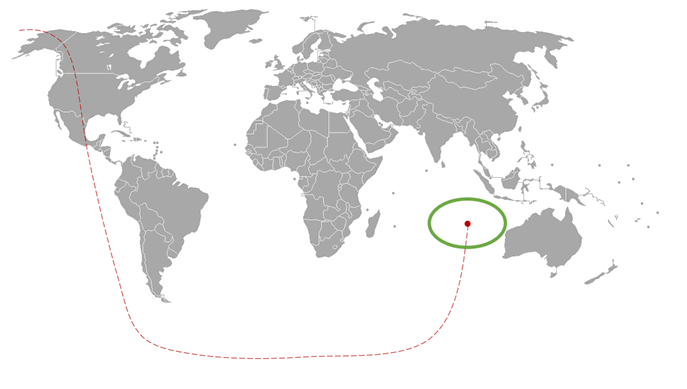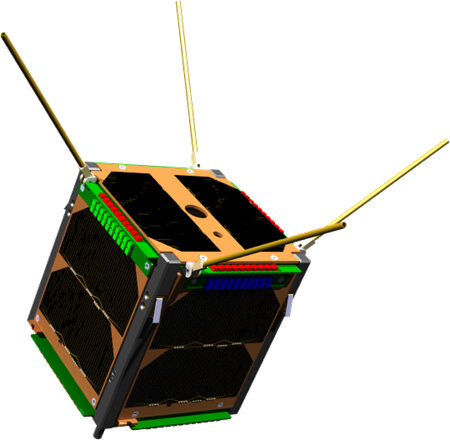LEDSAT is launched
After years in development and testing, the LEDSAT 1U CubeSat is finally in space!
The student satellite, developed under the Fly Your Satellite! programme, was successfully launched on Vega flight VV19 at 03:47 CEST from Europe’s spaceport in Kourou, French Guiana.

The LEDSAT team and members of the Fly Your Satellite! team held a small online gathering to watch the launch and share their journey to launch with other students participating in ESA Education programmes.
The second mission for Vega this year was a smooth ride. The first stage carried the Vega rocket for the first 100 seconds, after which it separated from the launch vehicle. The second and third stage took the rocket and its payloads further into orbit, separating one by one, with the remaining 4th stage, the AVUM, launching the payloads into their final orbits.
The deployment of LEDSAT into orbit took place about 100 minutes after launch, at 05:31 CEST, around the Gulf of Mexico. The CubeSat deployer pushed LEDSAT into a Sun-Synchronous Orbit of 540 km with a Local Time of the Descending Node (LTDN) of 22:30.
LEDSAT is not the only ESA-supported passenger on this Vega mission. CubeSats Sunstorm and RadCube are technology demonstrating missions supported by ESA’s Technology directorate.
The approximate Two-Line Element (TLE’s) of LEDSAT is:
1 00000U 21000ZZZ 21229.14658565 .00000000 00000-0 19534-3 0 18
2 00000 97.5470 303.0250 0015700 227.0950 165.8334 15.06634481000003

LEDSAT’s antenna deployed roughly 50 minutes after deployment, allowing LEDSAT to begin transmission. This took place at 06:20 CEST, over the Indian ocean, close to the west coast of Australia.
If you are a radio amateur, now is the time to listen for LEDSAT! Find more details about the radio amateur competition and how to listen for LEDSAT here.
The LEDSAT team will be ready to receive the first signals from LEDSAT and start the commissioning phase, where they will go over each subsystem of LEDSAT and ensure the status is ready for the operations phase. The commissioning phase is expected to take approximately 1 month, after which LEDSAT operations is expected to take one to two years.
In the operations phase, LEDSAT will flash its LEDs when in the eclipse of Earth for ground-based telescopes to investigate how the LEDs can be used to optically track a CubeSat.

The LEDSAT mission has been developed together with astronomers to not interrupt research activities. The LEDs are expected to have a magnitude between 8 and 13, meaning they will not be visible to the naked eye, since the eye can see down to a magnitude of 6. The magnitude scale is reversed, meaning a higher magnitude is less bright. The LEDs will also be much less invasive to the night sky than an airplane’s strobe light on a clear night sky. The LED payload can also be turned off at any time by the LEDSAT team.
Congratulations to the LEDSAT team from Sapienza University of Rome for a successful launch and best of luck as they enter the next phase of their space mission.
Find more information on the LEDSAT website.















 Germany
Germany
 Austria
Austria
 Belgium
Belgium
 Denmark
Denmark
 Spain
Spain
 Estonia
Estonia
 Finland
Finland
 France
France
 Greece
Greece
 Hungary
Hungary
 Ireland
Ireland
 Italy
Italy
 Luxembourg
Luxembourg
 Norway
Norway
 The Netherlands
The Netherlands
 Poland
Poland
 Portugal
Portugal
 Czechia
Czechia
 Romania
Romania
 United Kingdom
United Kingdom
 Slovenia
Slovenia
 Sweden
Sweden
 Switzerland
Switzerland

























